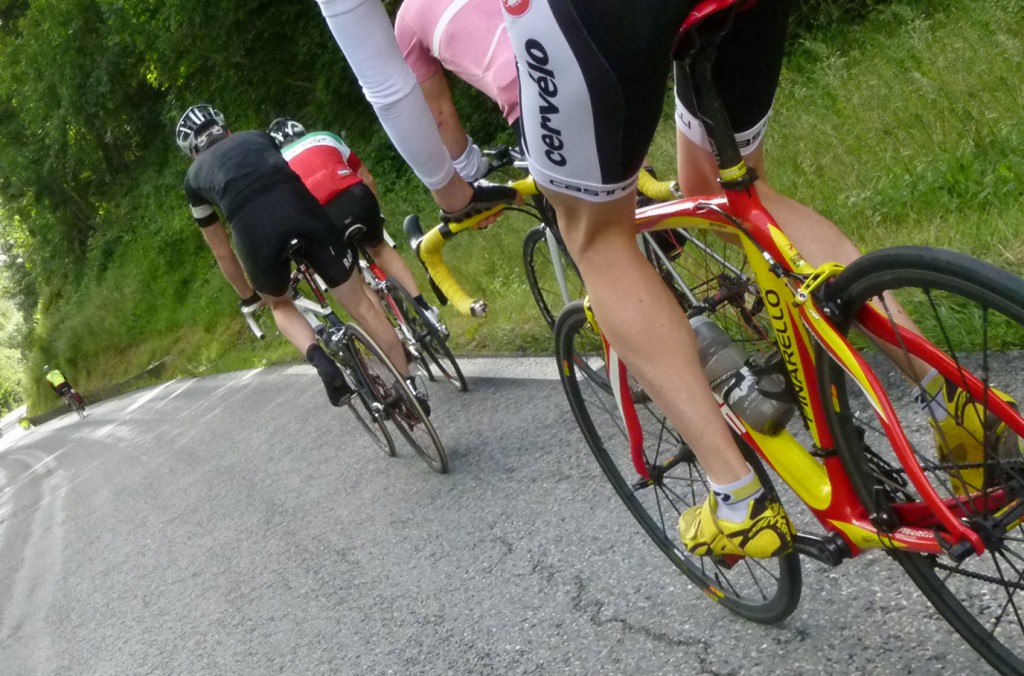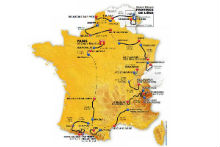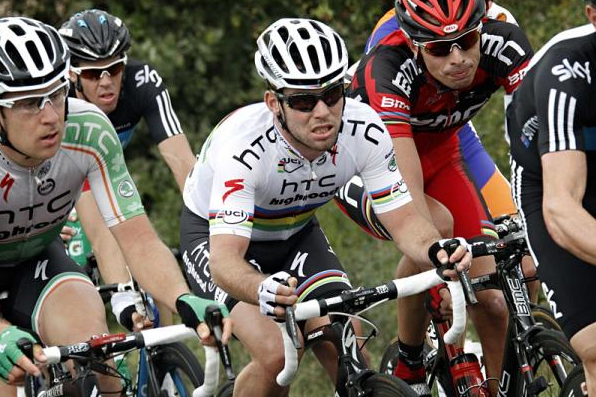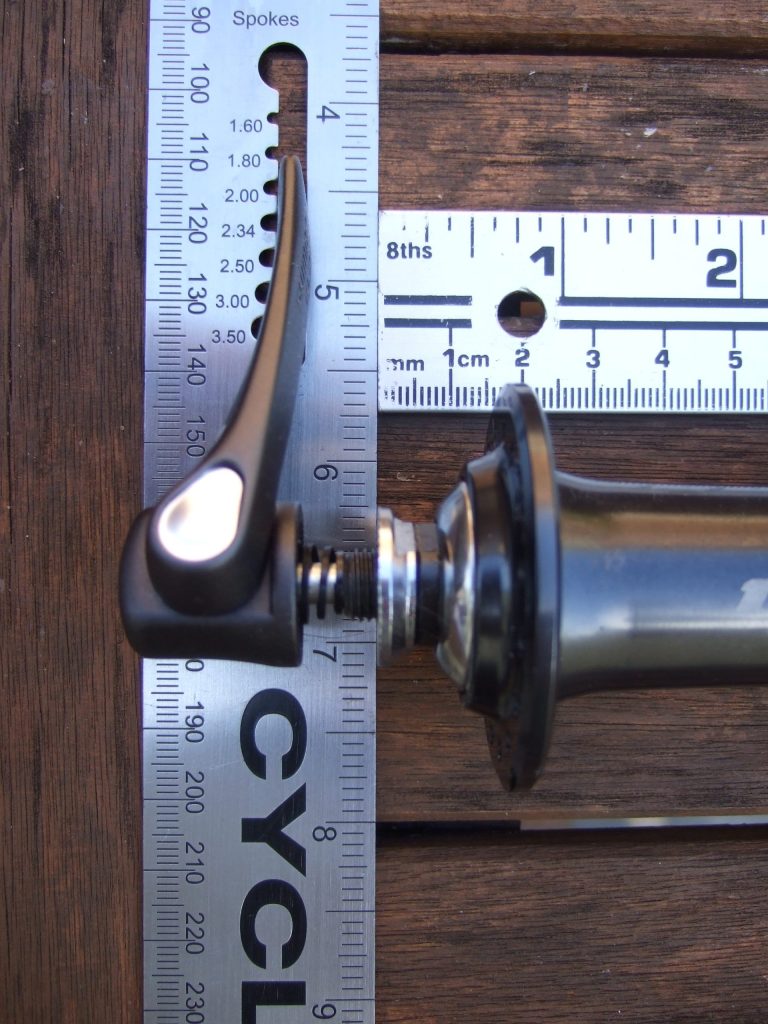
- Pic by La Fuga Travel
Earlier in this series I mentioned that, by working on the ‘technical’ aspects of your riding, you can improve your performance significantly without physically pressing any harder on the pedals, and there’s no better way to do this than with more efficient pedalling and improved cycling economy. The better your pedalling technique is, the more economical your performance. It’s speed for free. Your pedalling action may be only fractionally less than perfect but multiply that imperfection by the thousands of pedal strokes you do in any training session, sportive or race and it adds up to a lot of wasted energy. Fortunately, improving your pedalling is something you can easily work on.
Analysis
Start by looking closely at your pedalling. It’s not just about pushing down harder than the next guy. Efficient pedalling is about producing optimum power around the entire 360° of the pedal stroke. So you’re looking for a smooth, circular motion rather than a piston-like, independent leg action. Your position on the bike needs to be correct in order to achieve this, so begin by looking at yourself in a mirror when riding on a turbo trainer or, better still, rollers.
Getting someone to take a video of you from the side, front and back is an excellent idea. Are you pedalling in circles or pushing up and down? Are you rocking from side to side due to ‘reaching’ for the bottom of the pedal stroke because your position on the bike is wrong? Concentrate on developing a smooth circular action by imagining trying to scrape something off the sole of your shoe at the bottom of each circle.
Ideally you’d get yourself tested by an expert who measures your efficiency by analysing how much power you’re producing at all parts of the pedal stroke and very importantly tells you if one leg is producing the majority of the power. Many good bike shops and specialist bike-fit companies now offer this service and the results very specifically highlight any areas which you need to work on. As it’s something that will underpin every single pedal stroke you do for the rest of your cycling life, it’s well worth the investment.
Action
Next, you need to introduce drills that improve your pedalling efficiency into your weekly training programme. Two of the best drills are single-leg drills, which help balance out those irregularities between the right and left leg, and cadence pyramids, which help you raise the speed at which you can pedal. Why would you want to raise your cadence? Because a high cadence means less ‘force’ is needed per pedal revolution to generate a given amount of power than pushing a harder gear with a lower cadence to produce the same amount of power. So you’re saving energy – more precisely, working the muscles the way they are happier – and over the course of a long ride like a sportive, the amount of energy saved will be very significant.
How to do them
For single leg drills, do short intervals of one minute on, one minute off, where you isolate one leg then the other. On the turbo it’s easy; just unclip one foot and rest it on a chair while the other does the work, but practice it on the road too by simply relaxing the non-working leg entirely; it’ll soon become second nature and, by keeping both feet clipped in, you’ll avoid drawing unwanted attention. Progress by gradually increasing the time spent working on each leg by a few seconds. Concentrate on a ‘round’ pedalling action rather than just pushing on the down stroke.
Similarly, with high cadence drills, do “one minute on, one minute off ” intervals where you up your cadence by 5-10rpm each minute, starting from around 80rpm with a minute rest between each interval. Keep increasing the cadence until you start to bounce uncomfortably on the saddle, at which point you start to reduce the cadence by the same amount until you’re back where you started. Both of these sessions shouldn’t be hard physically – never allow your heart rate to go above middle Zone 3 so it’s no more than a ‘moderate’ effort. This means that these intervals can be completed during the warm-up intervals for harder sessions or as part of longer, aerobic endurance sessions.
Cadence counting
At this point you’re probably thinking, “How do I know what my cadence is?” It’s quite simple to figure out how fast you’re pedalling (apart from the obvious one of having a cadence counter on your computer). You need a timer on your cycle computer or clock visible if you’re on the turbo. Simply count the number of times your right (or left) foot reaches the lowest part of the pedal stroke in a 20 second period and multiply by three for your revs per minute. You can amend this by counting for 30 seconds and doubling the figure or counting for the whole minute for better accuracy.
Part 1: Going for Centuries
Part 2: Breaking down the barriers
Part 3: Goal setting
Part 4: Intensity
Part 5: Get in the Zone
Part 6: Performance Testing
Part 7: Creating a training plan
Part 8: Weekly training plans
Part 9: Be a better climber
About the author:
Huw Williams is a British Cycling Level 3 road and time trial coach. He has raced on and off road all over the world and completed all the major European sportives. He has written training and fitness articles for a wide number of UK and international cycling publications and websites and as head of La Fuga Performance, coaches a number of riders from enthusiastic novices to national standard racers.
Contact: [email protected]






